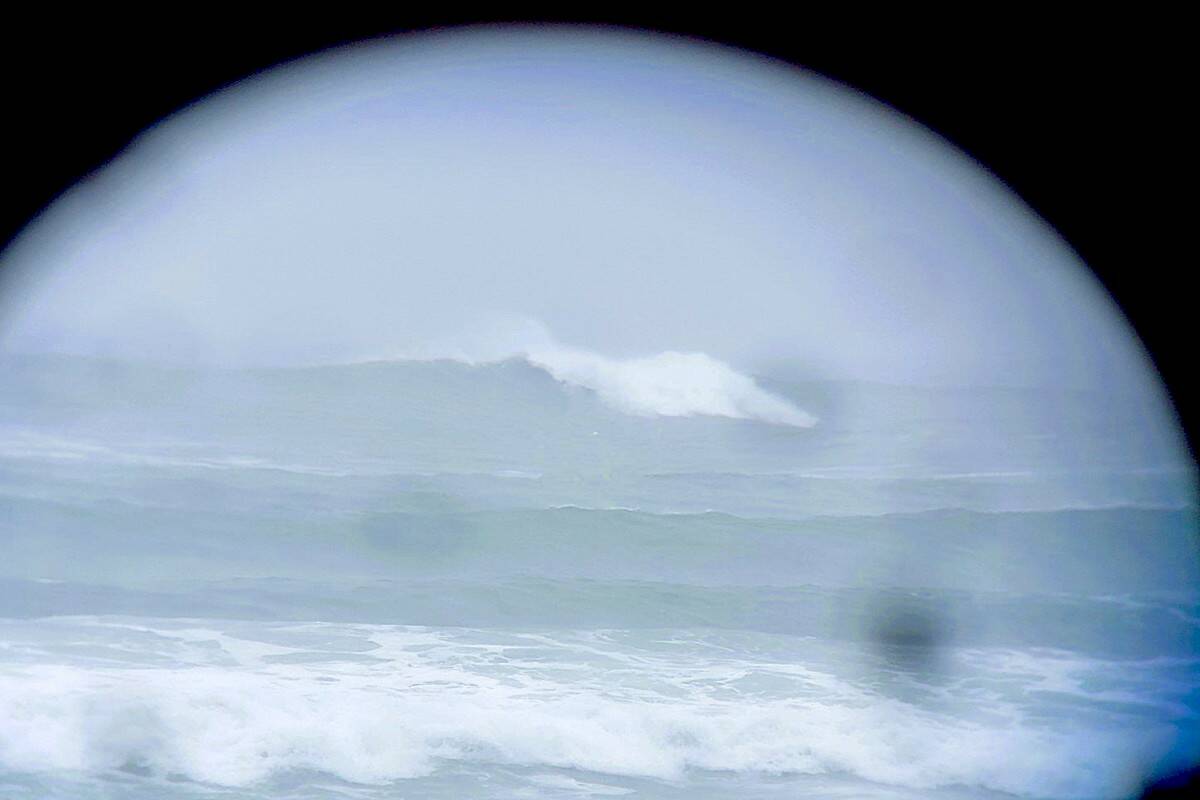Waves off British Columbia are constantly varying in height, in the lengths stretching between their crests and in the direction they travel.
But those different components largely average out, giving those tasked with forecasting ocean conditions the ability to predict waves would be two to three metres high off south Vancouver Island’s west coast by midday Thursday (Nov. 30).
Now and then, a single wave will stand out from all the others around it. The rare oceanic occurrence will earn the title of a rogue wave if it’s just over two times the size of its neighbouring swells.
University of Victoria physical oceanographer Johannes Gemmrich has been studying rogues for the last 15 years and helped author a new paper on using artificial intelligence to predict the likelihood of when and where rare waves will form.
Gemmrich and University of Copenhagen researchers used an extensive dataset of more than one billion individual wave measurements, from around 150 buoys across the North Pacific and North Atlantic oceans, to identify 100,000 rogue ones.
They also looked at the conditions present when rogue waves occur and used machine learning to find several parameters linked to that occurrence. Those parameters were fed into an artificial intelligence method called symbolic regression, which produced an equation that can be used to determine the physical conditions that are ideal for the formation of a rogue.
The research represents the first mathematical model that can shed light on the odds one of the large crests will appear after they’ve historically been unpredictable.
The work will be valuable to mariners of all kinds as Gemmrich said it will allow wave forecasts to include the likelihood of rogue waves forming at a certain time and place. He gave the example of how a rogue among two-metre waves would have little impact on a large vessel but could be dangerous for a recreation boat.
Other applications include helping shipping vessels map out safer routes where they’re less likely to encounter one of the large waves. Better forecasting will be useful for coastal communities as Gemmrich said rogue waves that reach the shore have the ability to cause flooding or sweep people away.
The researchers’ findings also strengthen the theory that linear progression is responsible for the development of rogue waves in the ocean. That theory argues multiple waves, travelling in slightly different speeds and directions, will eventually lead to several crests aligning at the same location to form the outsized ocean outliers.
“So, you would get all those individual crests adding up, forming one large crest,” Gemmrich said.
Up until now, rogue waves were largely thought to form as they slowly extracted energy from surrounding swells, before a large one ultimately developed. Gemmrich said that theory doesn’t really support what happens in the ocean and only works in wave tanks and models.
The UVic researcher expects their equation to help weather centres around the world better predict the probability of rogue waves in their respective oceans.
READ: ‘Most extreme’ rogue wave ever recorded off B.C. reignites alternative energy interest

